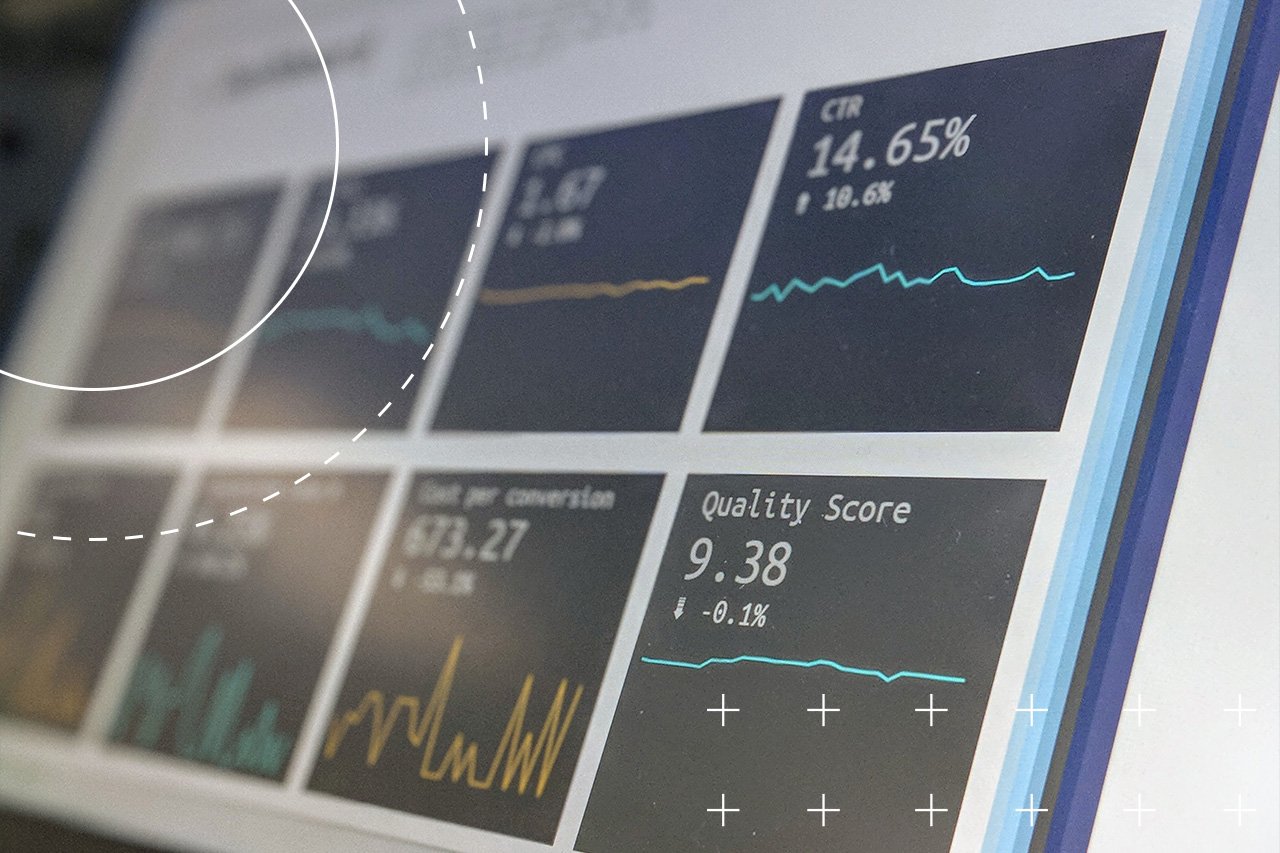Unlock local SEO success for your business with these strategies.
Local search engine optimization (SEO) is a major key to success for small businesses trying to thrive in their communities.
Thanks to the e-commerce revolution, most consumers today turn to the internet before any other source to find local products and services — newspapers don’t have a “find” function for searchers to use, unfortunately. This means optimizing your online presence for local search is no longer an option; it's a necessity.
In this guide to SEO for small businesses, we'll review strategies and tactics that will empower local business owners to dominate the SEO game and claim the top spot in their community’s local search results.
The Importance of Local SEO
Local SEO is the practice of optimizing your online presence to attract and engage customers in your local area, and it’s a critical component of any local digital marketing strategy.
When done effectively, local SEO can help your business appear prominently in local search results, local maps, and other platforms, ensuring potential customers — from your community and surrounding areas — can easily find and connect with you.
Winning the Local SEO Battle
Now that you know how local SEO strategy can help your small business, it’s time to learn the best ways to win in the competitive Search Engine Results Pages (SERPs) arena. Follow the tips below and watch your business listings move up the rankings.
1. Claim and Optimize Your Google My Business Listing
One of the most critical components of winning on local SEO is mastering Google My Business (GMB). This free SEO tool from Google appears prominently in local search results and allows you to manage your business's online presence.
Here's how to claim and optimize your GMB listing effectively:
Claiming Your GMB Listing
-
Go to the Google My Business website and sign in with your Google account.
-
Search for your Google Business Profile. If it appears in the search results, it may already have a listing. Click on it to claim it. If there’s no listing, click "Add your business to Google" and follow the prompts.
-
Verify your ownership. Google will send you a verification code via mail or phone, which you'll need to enter to verify your listing.
Optimizing Your GMB Listing
Once you've claimed your listing, it's time to optimize it for maximum visibility:
-
Complete Your Business Information: Ensure you have the big three that combine to make your NAP: Your business name, address, and phone number. Then, add your website and make sure other crucial details are accurate and consistent with what's on your website and other online platforms. Double-check your business shows up in the right place on Google Maps.
-
Add High-Quality Photos: Upload high-resolution photos of your business, including your logo, storefront, products, and service menus. High-quality images can attract more clicks and engagement.
-
Write a Compelling Business Description: Craft a concise, compelling business description highlighting your unique selling points and services. Use relevant keywords naturally within the description.
-
Select Accurate Categories: Choose the most relevant industry categories that describe your business accurately. Categories help Google understand your business and match it with relevant search queries.
-
Utilize Google Posts: Regularly create Google Posts to share updates, promotions, pricing changes, and events. These posts can appear directly in your Google My Business listing and attract more attention from search users.
-
Encourage Customer Reviews: Encourage satisfied customers to leave reviews on your GMB listing. Positive reviews can boost your credibility and rankings.
2. Leverage Local Keywords
Keywords are the foundation of SEO, and for local SEO, using the right local keywords is crucial.
Start by conducting keyword research to identify the terms and phrases that local customers are using in online searches for businesses like yours. Tools like Google Keyword Planner and Ubersuggest can help you discover relevant keywords.
Types of Local Keywords
-
Geo-Modified Keywords: These include location-based terms, like "best pizza in [your city]," "dentist near me," or, "coffee shop [your neighborhood]." This helps ensure you’re reaching a local audience.
-
Long-Tail Keywords: These are longer and more specific phrases that may be highly relevant to your local listing. For example, "organic local market in [your town]," or, "24-hour emergency plumber in [your city]."
-
Competitor Keywords: Analyze what keywords your competitors are ranking for and consider targeting those relevant to your business.
Incorporating Keywords
After identifying relevant keywords, it's time to incorporate them naturally across all of your website’s content, including:
-
Page Titles: Use local keywords in your page titles, but make sure they accurately describe the content.
-
Meta Descriptions: Craft compelling meta descriptions that include local keywords and encourage users to click.
-
Header Tags: Include keywords in your header and title tags (H1, H2, H3, etc.) to structure your content effectively.
-
Content: Create high-quality, informative, and engaging content that naturally incorporates local keywords.
-
URLs: Optimize your URL structure to include relevant keywords when possible.

3. Build Local Citations and Backlinks
Citations and backlinks play a significant role in general and local SEO. Citations are online mentions of your business name, address, and phone number (NAP) on other websites, while backlinks are links from other websites to your site. Here's how to build and manage these crucial elements:
Citations
-
Ensure NAP Consistency: Consistency is key when it comes to citations. Ensure your NAP information is consistent across all online platforms, including your website, social media profiles, and local business directories like your community’s chamber of commerce.
-
Claim and Update Listings: Claim your business on popular online directories like Yelp, Yellow Pages, and Bing Places. Verify and update your information to ensure accuracy.
-
Seek Industry-Specific Directories: Depending on your industry, seek out industry-specific directories and listings that can help boost your online presence.
Backlinks
-
Create High-Quality Content: The best way to attract backlinks is by creating valuable, shareable content. Invest in informative local content like blog posts, infographics, videos, and other materials that websites can trust and will want to link to as part of a successful content marketing strategy.
-
Outreach and Networking: Reaching out to industry influencers, organizations, and other local businesses in your community is a great way to go about link building. Building relationships can lead to natural, mutually beneficial backlink opportunities.
-
Monitor and Disavow: Regularly monitor your backlink profile using tools like Google Search Console. If you spot any spammy or irrelevant links, disavow them to avoid penalties.
4. On-Page SEO Tips for Local Businesses
On-page SEO refers to the optimization of individual web and landing pages to improve their rankings and visibility in search results. For local businesses, on-page SEO involves several aspects:
Mobile Optimization
It’s a mobile-centric world out there, so optimizing your website for mobile devices is non-negotiable. Ensure your website is responsive and mobile-friendly, as Google’s algorithms prioritize mobile-friendly sites in search ranking factors.
Page Load Speed
We’ve all experienced a frustratingly slow page-loading experience. A slow-loading website can drive visitors away and negatively impact your SEO. Use tools like Google's PageSpeed Insights to identify and address speed issues.
Schema Markup
Schema markup is a form of structured data that helps search engines understand the content of your website better. Implementing schema markup can enhance your listings in search results and increase click-through rates.
Localized Content
Create localized content that speaks directly to your target audience. This could include blog posts about local events, news, and stories that resonate with your community.
User Experience (UX)
A positive user experience is essential for both SEO and customer satisfaction. Ensuring easy navigation, clear calls to action, and a visually appealing design can drive repeat website visits and better SEO rankings.
5. Monitor and Measure Your Local SEO Performance
To ensure the effectiveness of your local SEO efforts, continuous monitoring and measurement are crucial. Here's how to track your progress:
Set Clear SEO Goals
Define specific, measurable, and realistic goals for your SEO efforts. Are you aiming to improve your website's ranking on Google, increase organic traffic, or generate more local leads?
Having clear objectives will guide your monitoring process.
Use Analytics Tools
Leverage free and paid SEO analytics tools like Google Analytics, Google Search Console, and Moz to monitor website traffic, keyword performance, and other crucial SEO metrics.
Regularly review these tools to track your progress and identify areas for improvement.
Keyword Monitoring
Keep an eye on the performance of your target keywords. Are they driving organic traffic? Are lead and sales conversion rates on the rise?
If necessary, adjust your keyword strategy by identifying new keywords or optimizing your existing content.
Local SEO Tracking
Make sure to specifically monitor your local SEO efforts. Use tools like Google My Business to track your local search rankings, customer reviews, and profile completeness. Also, be sure to track and respond promptly to testimonials, as positive interactions can boost your local rankings.
Regular Content Audits
Content plays a pivotal role in SEO. Conduct regular content audits to assess the quality and relevance of your articles, blog posts, and product pages.
Identify and fix any broken links, update outdated content, and ensure your content aligns with current SEO best practices.
Go Forth and Rule Local SEO
Remember that SEO as a tool for raising brand awareness is an ongoing process, and results may take time to materialize. Stay patient and consistent in your efforts, and use the monitoring and evaluation steps mentioned above to fine-tune your strategies.
By following these practices, your small local business can improve its online presence and attract more potential customers.
Embrace the power of TV advertising, and elevate your local marketing strategy to new heights with tvScientific.





